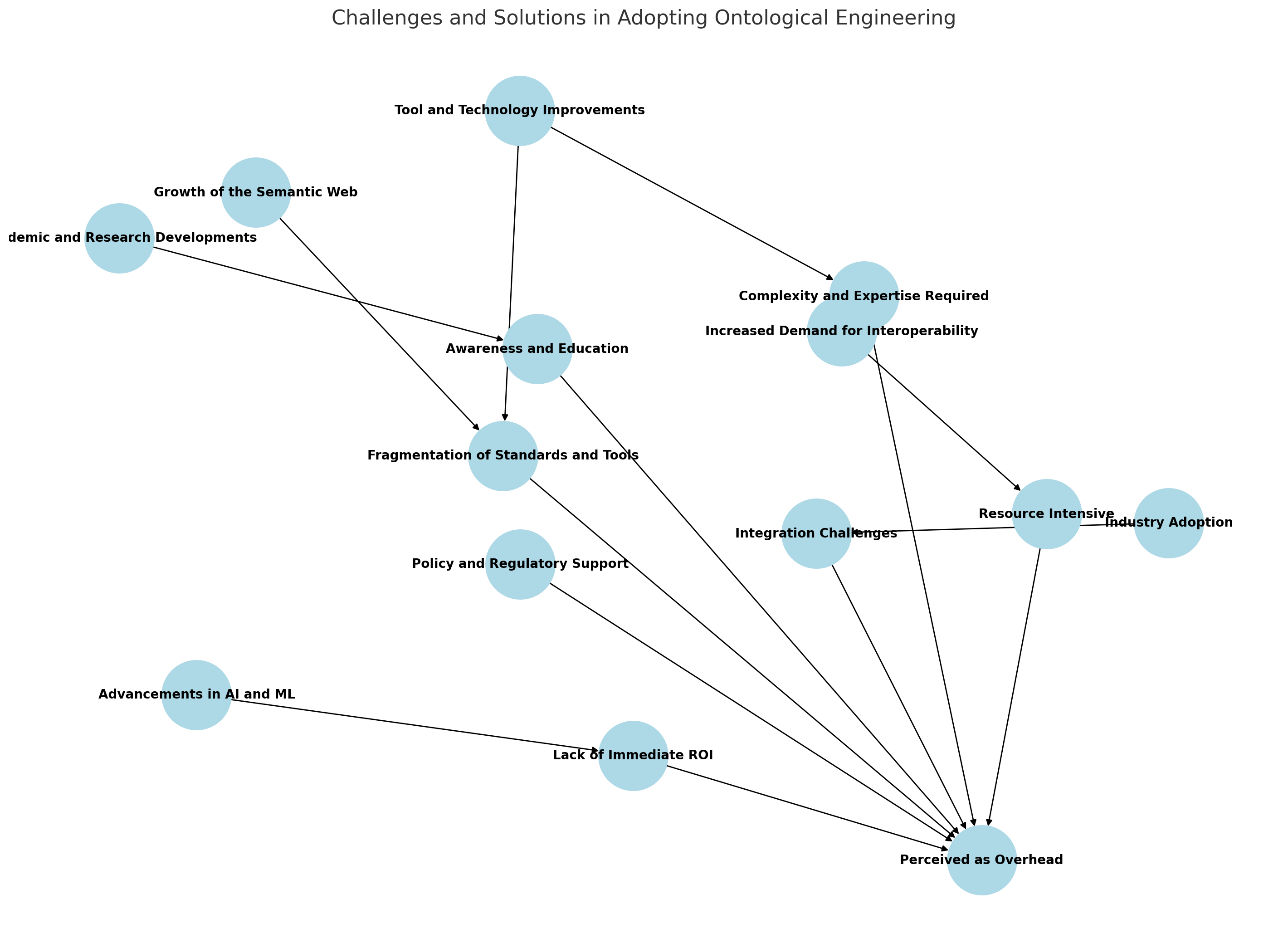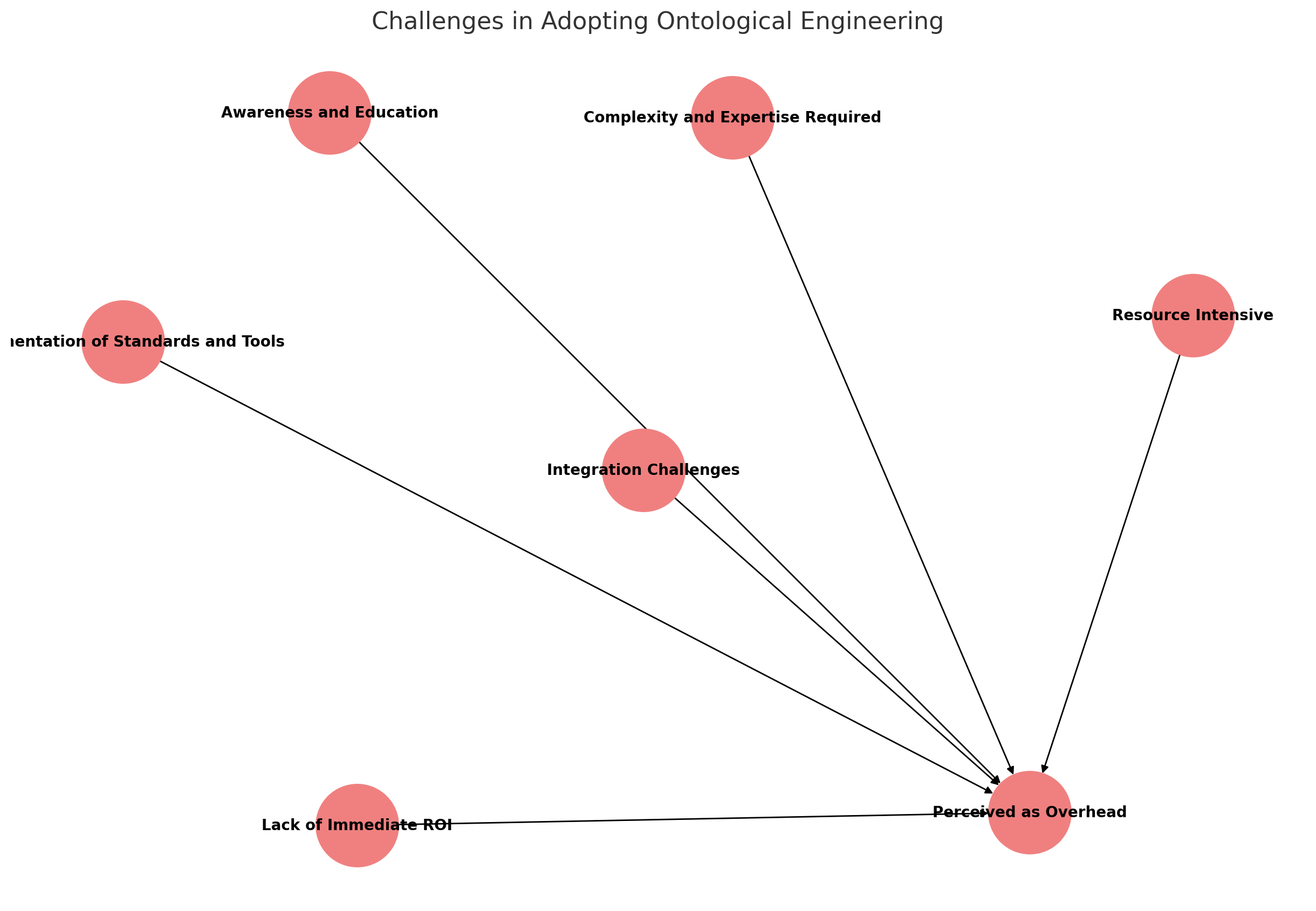User Ideas / Prospects
Engineering is at the heart of innovation and progress, driving advancements that shape our world and improve our quality of life. This article explores the critical role engineering plays in building a better future, touching on various fields and their contributions to societal advancement.
Advancements in Technology- Development of Cutting-Edge Technologies
- Smart Devices and AI: Engineers are at the forefront of developing smart devices and artificial intelligence, revolutionizing how we interact with technology and enhancing productivity.
- Example: The integration of AI in healthcare for early diagnosis and personalized treatment plans.

- Internet of Things (IoT)
- Connected Ecosystems: Engineering has enabled the creation of IoT, where devices communicate with each other, leading to smarter homes, cities, and industries.
- Example: Smart cities using IoT to manage resources efficiently and reduce energy consumption.

- Renewable Energy Solutions
- Green Energy Innovations: Engineers are developing renewable energy technologies such as solar, wind, and hydroelectric power, reducing reliance on fossil fuels and mitigating climate change.
- Example: Large-scale solar farms providing sustainable energy to communities.

- Healthcare Innovations
- Medical Devices and Biotech: Engineers develop advanced medical devices and biotechnology solutions that improve healthcare outcomes and enhance the quality of life.
- Example: Wearable health monitors that track vital signs and provide real-time health data.
- Improved Transportation Systems
- Smart and Sustainable Transport: Engineering innovations in transportation, such as electric vehicles and smart traffic management systems, contribute to safer and more efficient travel.
- Example: Autonomous electric vehicles reducing traffic congestion and pollution.

- Industrial Automation
- Efficiency and Productivity: Engineering in automation and robotics has transformed manufacturing, increasing efficiency, productivity, and safety.
- Example: Automated assembly lines in factories producing goods faster and with higher precision.
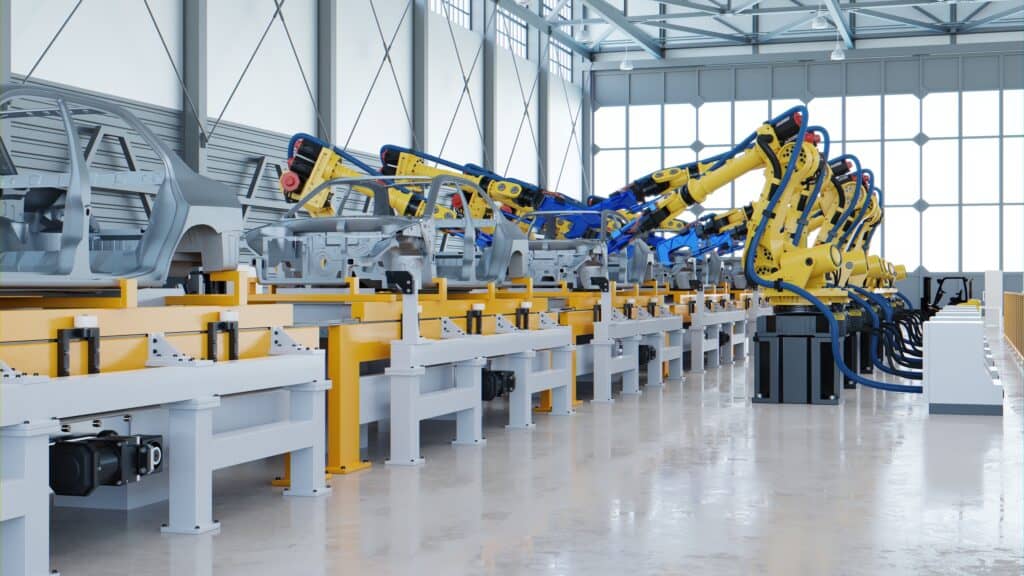
- Innovation and Entrepreneurship
- Startups and New Technologies: Engineering fosters a culture of innovation and entrepreneurship, leading to the creation of new technologies and businesses that drive economic growth.
- Example: Tech startups developing innovative solutions to address global challenges.
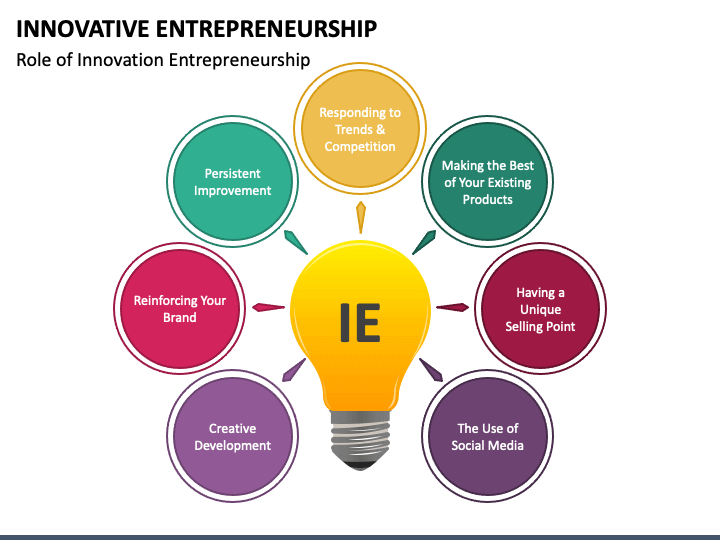
- Sustainable Infrastructure
- Eco-Friendly Buildings: Engineering principles are applied to design sustainable buildings that use less energy and resources, promoting environmental stewardship.
- Example: Green buildings with energy-efficient systems and sustainable materials.

- Access to Clean Water and Sanitation
- Water Treatment Technologies: Engineers develop technologies for clean water and sanitation, improving health and living conditions in underserved communities.
- Example: Portable water purification systems providing clean drinking water in remote areas.

- Education and Empowerment
- STEM Education: Engineering plays a crucial role in promoting STEM education, empowering the next generation with the skills needed to innovate and solve future challenges.
- Example: Educational programs and workshops inspiring young students to pursue careers in engineering and technology.
Engineering is a driving force behind many of the advancements that shape our world and improve our lives. From developing cutting-edge technologies and promoting sustainable development to enhancing quality of life and driving economic growth, engineering is crucial in building a better future. By continuing to innovate and apply engineering principles, we can address global challenges and create a more sustainable, prosperous, and equitable world.
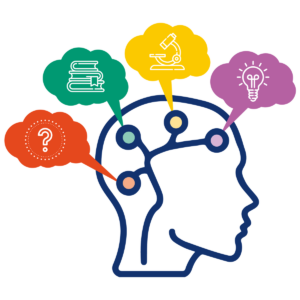
Engineering thinking is a systematic approach to problem-solving that draws on principles of engineering to address complex issues efficiently and effectively. It involves critical and analytical thinking, creativity, and a structured methodology to design, test, and implement solutions.
Key Components of Engineering Thinking
Problem Identification and Analysis
- Defining the Problem: Clearly identifying the problem to understand its scope and impact.
- Analyzing Requirements: Determining the needs and constraints associated with the problem to guide the solution process.
Research and Data Collection
- Gathering Information: Collecting relevant data and researching existing solutions and technologies.
- Benchmarking: Comparing current solutions to industry standards and best practices to identify areas for improvement.
Idea Generation and Conceptualization
- Brainstorming: Encouraging creative thinking to generate a wide range of potential solutions.
- Concept Development: Refining ideas into feasible concepts that can be further analyzed and tested.
Design and Prototyping
- Detailed Design: Creating detailed plans and specifications for the chosen solution.
- Prototyping: Building prototypes or models to test and refine the design.
Testing and Evaluation
- Testing: Conducting rigorous tests to evaluate the performance and reliability of the solution.
- Analysis and Feedback: Analyzing test results and gathering feedback to make necessary adjustments and improvements.
- Final Production: Transitioning from prototype to final product or solution, ensuring it meets all requirements.
- Deployment: Implementing the solution in the real-world context and monitoring its performance.
Iteration and Continuous Improvement
- Feedback Loop: Continuously collecting feedback and performance data to identify areas for further enhancement.
- Iterative Design: Making iterative improvements to refine and optimize the solution over time.
Applications of Engineering Thinking in Everyday Life
Home Improvement Projects: Using systematic problem-solving to plan and execute home renovations efficiently.
Personal Finance Management: Applying analytical skills to create and maintain budgets, and to make informed investment decisions.
Workplace Efficiency: Implementing engineering principles to streamline workflows, enhance productivity, and foster innovation.
Benefits of Engineering Thinking
Enhanced Problem-Solving Skills: Developing a structured approach to tackle complex issues.
Improved Creativity and Innovation: Encouraging creative thinking and the exploration of diverse solutions.
Better Decision-Making: Making informed decisions based on thorough analysis and testing.
ConclusionEngineering thinking equips individuals with the skills and mindset to approach problems methodically and creatively. Whether in professional settings or everyday life, adopting engineering thinking can lead to more effective solutions and continuous improvement.
Engineering thinking involves systematic problem-solving and critical thinking skills that are invaluable in everyday life. This article explores why these skills are essential for everyone.
Understanding Engineering Thinking
What is Engineering Thinking?: Engineering thinking is a systematic approach to problem-solving that draws on principles of engineering to address complex issues efficiently and effectively. It involves critical and analytical thinking, creativity, and a structured methodology to design, test, and implement solutions.

How Engineering Thinking Helps Individuals Grow and Become Smarter in Life
Engineering thinking is a powerful approach to problem-solving that equips individuals with skills and habits that foster personal growth and intelligence. This article explores how adopting engineering thinking can help individuals become smarter and more capable in various aspects of their lives.
Enhancing Problem-Solving Skills By Systematic Approach to Challenges
Example: When faced with a complex project at work, breaking it down into smaller tasks and systematically tackling each one leads to effective and efficient solutions.

Critical Thinking and Analysis
Example: Analyzing financial statements and market trends before making investment decisions helps in choosing the best options.

Encouraging Creative Solutions
Example: Designing a unique marketing strategy for a new product by combining traditional methods with innovative digital approaches.
Design Thinking
Example: Creating a user-friendly mobile app interface by considering user feedback and design principles.

Learning from Failure
Example: Learning from a failed business venture and using the insights to start a more successful one.
Embracing Iteration and ImprovementBy Continuous Improvement: Engineering thinking involves iterating solutions based on feedback and performance, leading to continuous improvement.
Effective Communication with Clear and Precise Communication: Engineers learn to communicate complex ideas clearly and precisely, a skill that is valuable in any context.
Example: Presenting a well-organized report to stakeholders, clearly explaining the technical details and implications.
Collaborative Teamwork
Team Collaboration: Engineering projects often require collaboration, teaching individuals how to work effectively in teams.
Example: Leading a project team to develop a new product, ensuring that everyone’s expertise is utilized and coordinated.
Curiosity and Continuous Learning
Staying Updated: Engineering thinking fosters a mindset of curiosity and continuous learning, encouraging individuals to stay updated with the latest advancements and knowledge.
Example: Regularly attending workshops and courses to stay informed about the latest developments in one’s field.
Adapting to Technological Changes
Embracing Technology: Understanding engineering principles helps individuals adapt to and leverage new technologies effectively.
Example: Learning to use new software tools to improve productivity and efficiency in daily tasks.
Enterprise Governance and Enterprise Engineering are two complementary disciplines that help organizations achieve their goals and remain competitive in a rapidly changing environment. Here’s why they are important:
Enterprise Governance
1. Strategic Alignment: Ensures that all activities within the organization align with the overall strategy and objectives. This helps in prioritizing initiatives that drive value.
2. Risk Management: Provides a framework to identify, assess, and manage risks that could impact the organization’s ability to achieve its goals.
3. Accountability and Transparency: Establishes clear roles, responsibilities, and reporting structures, promoting accountability and transparency within the organization.
4. Performance Measurement: Implements mechanisms to monitor and measure performance against set goals, enabling continuous improvement and informed decision-making.
5. Regulatory Compliance: Ensures that the organization adheres to laws, regulations, and standards, thereby avoiding legal issues and penalties.
Enterprise Engineering1. Process Optimization: Focuses on designing and improving business processes to increase efficiency and effectiveness, thereby reducing costs and enhancing quality.
2. Innovation and Adaptation: Facilitates the development of new products, services, and business models, allowing the organization to adapt to market changes and technological advancements.
3. System Integration: Ensures that different systems within the organization work together seamlessly, improving data flow and operational efficiency.
4. Organizational Design: Helps in structuring the organization in a way that supports its strategy and operations, including defining roles, responsibilities, and workflows.
5. Change Management: Provides tools and methodologies to manage organizational change effectively, ensuring smooth transitions and minimizing disruptions.
When combined, these disciplines ensure that the organization not only has a clear direction and a framework for accountability (Governance) but also possesses the tools and processes needed to operate efficiently and innovate continuously (Engineering). This synergy helps organizations remain resilient, competitive, and capable of sustained growth.
The future of ontological engineering is promising, especially as the need for intelligent data integration, semantic interoperability, and advanced AI capabilities continues to grow. Here are several key factors that suggest a bright future for this field:
- IoT Expansion: As the Internet of Things (IoT) expands, the need for seamless data exchange between diverse devices and systems will drive the adoption of ontological engineering.
- Data Integration: Organizations will increasingly require sophisticated data integration solutions to leverage data from various sources, making ontologies essential.
2. Advancements in AI and ML
- Enhanced AI: Ontologies can improve AI's ability to understand context and semantics, leading to more advanced and accurate machine learning models.
- Explainable AI: Ontologies can help in developing explainable AI systems by providing clear, structured representations of knowledge that can be used to explain AI decisions.
3. Growth of the Semantic Web
- Linked Data: The vision of the Semantic Web, where data is interconnected and easily accessible, relies heavily on ontologies. This will promote the growth and adoption of ontological engineering.
- Standardization: Ongoing efforts to standardize ontological languages and tools will make it easier to develop and use ontologies, furthering their adoption.
4. Industry Adoption
- Healthcare: Ontologies can play a crucial role in healthcare by enabling better data sharing, integration, and understanding of complex medical information.
- Finance: Financial institutions can use ontologies to improve data analytics, risk management, and regulatory compliance.
- Manufacturing: In manufacturing, ontologies can enhance supply chain management, product lifecycle management, and interoperability between systems.
5. Academic and Research Developments
- Research Innovations: Ongoing research in knowledge representation, reasoning, and semantic technologies will continue to advance the field.
- Education and Training: As more educational programs and resources become available, the expertise in ontological engineering will grow, fostering broader adoption.
6. Tool and Technology Improvements
- User-Friendly Tools: The development of more user-friendly and integrated tools for creating, managing, and using ontologies will lower the barrier to entry.
- Integration with AI/ML Frameworks: Better integration of ontological tools with popular AI and ML frameworks will encourage their use in AI projects.
7. Policy and Regulatory Support
- Regulatory Compliance: As regulations around data privacy, interoperability, and transparency increase, ontologies can provide structured ways to meet these requirements.
- Government Initiatives: Government initiatives promoting data sharing and interoperability in various sectors (e.g., healthcare, smart cities) will drive the adoption of ontological engineering.
- Complexity Management: Managing the complexity of large-scale ontologies will remain a challenge, requiring ongoing innovations in tooling and methodologies.
- Adoption Resistance: Overcoming resistance to adoption due to perceived overhead and the need for specialized expertise will be essential.
Conclusion:
Ontological engineering is poised to play a critical role in the future of AI, IoT, and data-driven technologies. By addressing current challenges and leveraging ongoing advancements in technology and research, the field can achieve widespread adoption and significantly impact various industries. As the need for intelligent, interoperable systems continues to grow, ontological engineering will become increasingly important, driving innovation and enabling new capabilities across diverse domains.
Here's a diagram that represents both the challenges and the solutions for adopting ontological engineering. The diagram illustrates how each challenge relates to the perceived overhead and how various solutions can address these challenges:
Challenges (highlighted in light blue):
- Complexity and Expertise Required
- Resource Intensive
- Lack of Immediate ROI
- Fragmentation of Standards and Tools
- Integration Challenges
- Awareness and Education
- Perceived as Overhead (central node representing the cumulative effect of all challenges)
Solutions (positioned around the challenges):
- Increased Demand for Interoperability
- Advancements in AI and ML
- Growth of the Semantic Web
- Industry Adoption
- Academic and Research Developments
- Tool and Technology Improvements
- Policy and Regulatory Support
The arrows indicate how each solution can help mitigate the respective challenges, ultimately reducing the perception of ontological engineering as an overhead. This integrated view helps visualize the multifaceted approach required to overcome the barriers to adopting ontological engineering.
Ontological engineering principles are indeed powerful and beneficial for many applications, including IoT, AI, and ML-centric websites. However, there are several reasons why these principles might not be as widely adopted as one might expect:
1. Complexity and Expertise Required
- Steep Learning Curve: Developing and maintaining ontologies require specialized knowledge and skills in formal logic, knowledge representation, and domain-specific expertise.
- Technical Expertise: Implementing ontologies often involves complex tools and languages (e.g., OWL, RDF), which can be a barrier for developers who are more familiar with traditional programming languages and frameworks.
2. Resource Intensive
- Time-Consuming: Creating detailed and comprehensive ontologies can be a time-consuming process, requiring significant effort in analysis, design, and validation.
- Costly: The development and maintenance of ontologies can be costly in terms of both human resources and computational resources.
3. Lack of Immediate ROI
- Long-Term Benefits: The benefits of ontological engineering, such as improved data integration and enhanced AI capabilities, often materialize in the long term. Many organizations prioritize short-term gains and quick wins, leading to less investment in ontology development.
- Unclear Immediate Impact: For some projects, the immediate impact of using ontologies may not be clear, making it hard to justify the investment to stakeholders.
4. Fragmentation of Standards and Tools
- Diverse Standards: The field of ontological engineering involves various standards and tools, which can be confusing and lead to fragmented efforts. This lack of a unified approach can discourage adoption.
- Tooling Issues: While there are tools like Protégé for ontology development, they might not be as user-friendly or well-integrated with mainstream development environments and workflows.
5. Integration Challenges
- Legacy Systems: Many organizations have legacy systems with data that are not designed for semantic interoperability. Integrating ontological approaches with these systems can be challenging and require significant re-engineering.
- Data Silos: Data silos within organizations can impede the effective implementation of ontologies, as data needs to be shared and linked across different departments and systems.
6. Awareness and Education
- Lack of Awareness: Many developers, data scientists, and decision-makers might not be fully aware of the benefits and capabilities of ontological engineering.
- Educational Gaps: There is a need for more educational resources and training programs to bridge the knowledge gap and promote the adoption of ontological principles.
7. Perceived as Overhead
- Initial Overhead: The initial effort required to develop and implement ontologies is often seen as overhead compared to more straightforward, immediate solutions.
- Perceived Complexity: The perceived complexity of ontological engineering can deter teams from adopting these practices, especially when simpler alternatives are available.
To promote the adoption of ontological engineering principles in IoT and AI/ML-centric websites, several steps can be taken:
- Education and Training: Increase awareness and provide training on the benefits and implementation of ontological engineering.
- Tool Development: Develop more user-friendly tools and frameworks that integrate well with existing development environments.
- Standardization: Promote standardization efforts to reduce fragmentation and provide clear guidelines and best practices.
- Showcase Success Stories: Highlight successful case studies and examples where ontological engineering has provided significant benefits.
- Collaboration: Encourage collaboration between academia, industry, and standardization bodies to drive innovation and adoption.
By addressing these challenges, the principles of ontological engineering can become more mainstream and widely adopted, leading to more intelligent, interoperable, and effective IoT and AI/ML-centric systems.
Ontology engineering is considered a futuristic engineering field that complements and extends the capabilities of artificial intelligence (AI) for several reasons:
- Data Integration: Ontology engineering allows for the integration of data from diverse sources by providing a shared vocabulary and structure. This interoperability is crucial for AI systems, which often require access to vast amounts of heterogeneous data.
- Standardization: By creating standardized ontologies, different systems can communicate and understand each other’s data, facilitating seamless data exchange and collaboration.
- Semantic Understanding: Ontologies provide a formal way to represent knowledge in a specific domain, including the relationships between concepts. This enhances the ability of AI systems to understand and reason about data contextually.
- Complex Relationships: Ontologies can model complex relationships and rules within a domain, enabling AI systems to perform more sophisticated reasoning and inference.
- Linked Data: Ontology engineering is a key component of the Semantic Web, which aims to create a web of data that can be easily shared and reused. This makes data more accessible and usable by AI applications, driving innovation and development in the field.
- Machine-Readable Data: By structuring data in a way that is understandable by machines, ontologies enable more advanced AI applications, such as intelligent agents and automated decision-making systems.
- Contextual Understanding: Ontologies provide context to data, allowing AI systems to understand not just the data itself but also its meaning and relationships. This leads to more accurate and meaningful AI-driven insights and actions.
- Knowledge Sharing: Ontologies facilitate the sharing and reuse of knowledge across different AI systems, promoting more robust and comprehensive AI models.
- Domain-Specific AI: Ontology engineering enables the development of domain-specific AI applications by providing tailored knowledge representations. This is particularly important in fields like healthcare, finance, and legal, where domain knowledge is complex and critical.
- Semantic Search and Discovery: Enhanced search capabilities powered by ontologies allow for more precise and relevant information retrieval, improving the effectiveness of AI-driven search engines and recommendation systems.
- Natural Language Processing (NLP): Ontologies enhance NLP by providing structured knowledge that helps AI understand and generate human language more accurately.
- Personalization: By understanding the context and relationships between concepts, AI systems can provide more personalized and context-aware recommendations and services.
- Scalability: Ontologies make it easier to scale AI systems by providing a clear and structured way to add new knowledge and relationships as the domain evolves.
- Adaptability: Ontologies allow AI systems to adapt to new domains and contexts more easily, ensuring they remain relevant and effective in a rapidly changing technological landscape.
Ontology engineering is not just another futuristic engineering field; it is a foundational technology that enhances and extends the capabilities of AI. By providing structured, semantic representations of knowledge, ontologies enable AI systems to understand, reason, and interact with data in more advanced and meaningful ways. This synergy between ontology engineering and AI paves the way for more intelligent, interoperable, and context-aware systems, driving the future of technology and innovation.
Creating a Semantic Web site involves using technologies and standards that enable your site’s data to be easily interpreted and linked by machines. Here are the steps to create a site as a Semantic Web:
1. Define the Purpose and Scope- Purpose: Determine the main goals of your Semantic Web site (e.g., data integration, improved search, better data sharing).
- Scope: Identify the domain and the types of data you will work with.
- Identify Key Entities: Determine the key entities and concepts within your domain (e.g., products, customers, events).
- Define Relationships: Establish the relationships between these entities (e.g., a customer purchases a product).
- Select Existing Ontologies: Use established ontologies relevant to your domain, such as FOAF (Friend of a Friend) for social data, Dublin Core for metadata, or schema.org for general web data.
- Create Custom Ontologies: If necessary, develop custom ontologies to accurately represent your domain-specific data.
- RDF Triples: Structure your data using RDF (Resource Description Framework) triples (subject, predicate, object).
- RDF Tools: Utilize tools and libraries for generating and managing RDF data (e.g., Apache Jena, RDFLib for Python).
- RDFa: Embed RDF metadata within HTML using RDFa (Resource Description Framework in Attributes).
- Microdata: Embed metadata using the Microdata format, often used with schema.org vocabularies.
- JSON-LD: Use JSON-LD (JavaScript Object Notation for Linked Data) to include linked data within JSON format, suitable for embedding in HTML documents.
- SPARQL Endpoint: Set up a SPARQL endpoint to allow querying of your RDF data. SPARQL (SPARQL Protocol and RDF Query Language) is used to query RDF data.
- Tools: Use tools like Apache Fuseki to create and manage SPARQL endpoints.
- URIs: Use Uniform Resource Identifiers (URIs) to uniquely identify resources.
- Linked Data Principles: Follow Linked Data principles, including using URIs as identifiers, providing useful information about resources, and including links to other URIs.
- Semantic Markup: Ensure that the HTML markup is semantically rich, making it easier for search engines and other services to understand the content.
- User Interaction: Design interfaces that allow users to interact with and query the semantic data.
- Validation Tools: Use validation tools to check the correctness of your RDF, RDFa, Microdata, or JSON-LD data (e.g., W3C RDF Validation Service).
- Quality Assurance: Test the functionality of your SPARQL endpoint and ensure that queries return accurate results.
- Publish Data: Make your RDF data and SPARQL endpoint publicly accessible.
- Maintenance: Regularly update and maintain the data and ontologies to reflect changes in the domain.
Define Data Model: Suppose you’re building a semantic web site for an online bookstore.
- Entities: Books, Authors, Genres, Customers.
- Relationships: An author writes a book, a customer purchases a book.
Choose Ontologies: Use schema.org for general web data, Dublin Core for metadata, and create a custom ontology for specific bookstore needs.
Represent Data: Define specific format for representing data.
- Embed Metadata: Use JSON-LD in HTML. such as
{ "@context": "http://schema.org", "@type": "Book", "name": "The Great Gatsby", "author": { "@type": "Person", "name": "F. Scott Fitzgerald" }, "genre": "Classic Literature" }
5. Set Up SPARQL Endpoint: Use Apache Fuseki. for as a server
- Protégé: For creating and managing ontologies.
- Apache Jena: A framework for building Semantic Web and Linked Data applications.
- RDFLib: A Python library for working with RDF.
- schema.org: Vocabulary for structured data on the web.
- Apache Fuseki: A SPARQL server for serving RDF data.
By following these steps, you can create a Semantic Web site that leverages the power of structured data, making it more accessible and useful for both humans and machines.
Home renovation involves making major changes or improvements up to a residential property, similar to remodeling a kitchen, renovating a bathroom, adding an extension, or upgrading the entire house. Choosing the right contractor for your house renovation project is needed to its success. Zones steps to help you pick out right contractor:
Define Your Project: Before searching for a contractor, clearly define your renovation project. Determine what changes you have the desire to make, charges, also specific requirements or preferences you have.
Research Contractors: Start understanding contractors in this particular area. Inquire about for recommendations from friends, family, or neighbors who've undergone similar renovation projects. You can also look on the internet, check reviews on platforms like Google or Yelp, will visit web services of local contractors.
Check Credentials: Make sure that the contractors you're considering are licensed, bonded, and insured. Licensing requirements vary by state, so test regulations in your personal area. Insurance protects you in the event that of accidents or damages throughout the renovation process.
Experience and Portfolio: Search for contractors after a while in the kind of renovation project you're planning. Ask to see a number of their past work or their portfolio of completed projects. This will give you advisable and health of their craftsmanship and style.
References: Request references from the contractors and speak to past clients to search their experience choosing them. Inquire about the nature of work, adherence to schedule and budget, and overall satisfaction having the contractor's services.
Meet in Person: Schedule meetings with potential contractors to discuss your project in detail. Ask questions about their process of the renovation, timelines, subcontractors they hire a, and how they handle unexpected issues or changes.
Get Multiple Quotes: Obtain quotes from several contractors for your renovation project. Compare the quotes carefully, but don't automatically choose the lowest bidder. Take into cosideration the overall value you're getting for the value, including the true quality of materials and workmanship.
Contract and Terms: Review the project win carefully before signing. Ensure that it includes all the details of the organization, akin to information work, materials for use, timelines, payment schedule, and warranties. Should there be any discrepancies or unclear terms, clarify your parents the contractor before proceeding.
Communication: Order a contractor who communicates effectively and promptly. You must sense at ease possibilities, expressing concerns, and receiving updates all through the renovation process.
Trust Your Instincts: Ultimately, trust your instincts while selecting a contractor. Consider factors resembling professionalism, responsiveness, and how everybody team up with them. Decide on a contractor who you feel confident will deliver high-quality work and prioritize your satisfaction.
By following these steps and conducting thorough research, you'll find the appropriate contractor for your own view publisher site project, ensuring a smooth and successful outcome.
- Description: The Gene Ontology project provides a framework for the representation of gene and gene product attributes across all species. The ontology covers three domains: biological process, cellular component, and molecular function.
- Purpose: To standardize the representation of gene and gene product attributes and facilitate data integration and analysis in genomics research.
- Website: Gene Ontology
- Description: SNOMED CT is a systematically organized collection of medical terms providing codes, terms, synonyms, and definitions used in clinical documentation and reporting.
- Purpose: To support the development of comprehensive, standardized clinical terminologies for use in electronic health records (EHRs) and other healthcare applications.
- Website: SNOMED CT
- Description: DBpedia is a project aiming to extract structured content from the information created as part of the Wikipedia project. It allows users to query relationships and properties associated with Wikipedia resources.
- Purpose: To provide a semantic, linked-data version of Wikipedia, enabling easier access to structured data from Wikipedia for various applications.
- Website: DBpedia
4. FOAF (Friend of a Friend)
- Description: FOAF is an ontology for describing people, their activities, and their relations to other people and objects. It is used to create a machine-readable Web of people, documents, and relationships.
- Purpose: To enable the sharing of personal information on the web in a way that is understandable by machines, facilitating social networking and other applications.
- Website: FOAF Project
5. Protégé
- Description: Protégé is an open-source ontology editor and framework for building intelligent systems. It is widely used for creating and managing ontologies and supports a variety of ontology languages.
- Purpose: To provide a platform for developing, sharing, and publishing ontologies, supporting a range of users from domain experts to ontology engineers.
- Website: Protégé
- Description: GoodRelations is an ontology for e-commerce, enabling the representation of products, prices, and business relationships in a structured and machine-readable way.
- Purpose: To improve the efficiency and effectiveness of e-commerce transactions by providing a standard way to describe product offerings and business interactions.
- Website: GoodRelations
- Description: The OBO Foundry is a collaborative effort to develop a family of interoperable ontologies that are both logically well-formed and scientifically accurate.
- Purpose: To create a suite of orthogonal, interoperable, and scientifically accurate reference ontologies for the biological and biomedical sciences.
- Website: OBO Foundry
8. BFO (Basic Formal Ontology)
- Description: BFO is a top-level ontology designed to support domain ontologies in scientific research. It provides a framework for the development of domain-specific ontologies.
- Purpose: To ensure interoperability between ontologies used in scientific research and provide a common basis for domain ontologies.
- Website: Basic Formal Ontology
These projects illustrate the diverse applications and significant impact of ontological engineering across various fields, from healthcare and life sciences to e-commerce and social networking.
if you wondering why/how these projects i consider as Ontological Engineering Project than here are the reasons.
These projects can be classified as ontological engineering projects because they all involve the creation, maintenance, and application of ontologies. Here's how each project fits into the framework of ontological engineering:
1. Gene Ontology (GO)
- Classification: Domain-specific ontology for genomics and molecular biology.
- Reason: GO provides a structured vocabulary for gene and gene product attributes, enabling consistent data annotation and integration across different species and databases.
2. SNOMED CT (Systematized Nomenclature of Medicine—Clinical Terms)
- Classification: Clinical ontology for healthcare and medicine.
- Reason: SNOMED CT systematically organizes medical terms and relationships, facilitating standardized clinical documentation and interoperability in electronic health records.
3. DBpedia
- Classification: General-purpose ontology for structured data extraction from Wikipedia.
- Reason: DBpedia extracts structured information from Wikipedia, creating an ontology that represents relationships between concepts and entities for use in semantic web applications.
4. FOAF (Friend of a Friend)
- Classification: Social ontology for describing people and their relationships.
- Reason: FOAF provides a vocabulary for describing personal information and social networks in a machine-readable format, enabling interoperability across social web applications.
5. Protégé
- Classification: Ontology development tool.
- Reason: Protégé is an ontology editor and framework that supports the creation, management, and sharing of ontologies, making it a central tool in ontological engineering.
6. GoodRelations
- Classification: E-commerce ontology for product and business information.
- Reason: GoodRelations provides a standardized vocabulary for representing product offerings, prices, and business relationships, facilitating semantic data exchange in e-commerce.
7. Open Biological and Biomedical Ontology (OBO) Foundry
- Classification: Consortium for developing interoperable ontologies in biology and biomedicine.
- Reason: The OBO Foundry supports the creation of a suite of interoperable ontologies for biological and biomedical research, ensuring logical consistency and scientific accuracy.
- Classification: Top-level ontology framework.
- Reason: BFO provides a foundational ontology that supports the development and integration of domain-specific ontologies, ensuring interoperability and consistency in scientific research.
- Creation of Structured Frameworks: Each project involves developing a structured representation of concepts and their relationships within a specific domain.
- Standardization: These ontologies provide standardized vocabularies that facilitate consistent data annotation, integration, and retrieval.
- Interoperability: The ontologies enable different systems and organizations to understand and use data consistently, promoting interoperability.
- Knowledge Representation: The projects formalize knowledge within a domain, making it machine-readable and enabling automated reasoning and advanced data processing.
- Tool Support: Tools like Protégé are essential for building, managing, and sharing ontologies, highlighting the practical aspect of ontological engineering.
By addressing these key elements, each project exemplifies the principles and practices of ontological engineering, contributing to the broader goals of improving data integration, sharing, and utilization across various domains.

